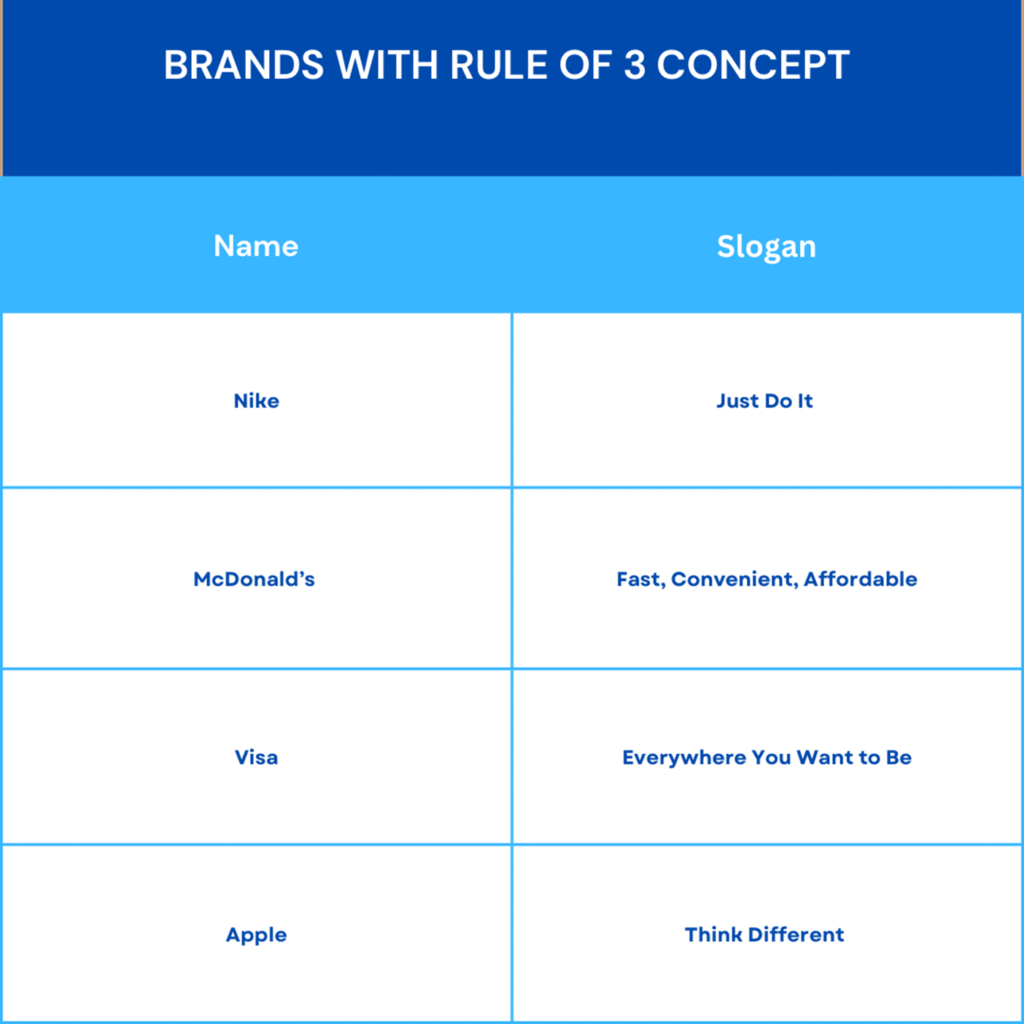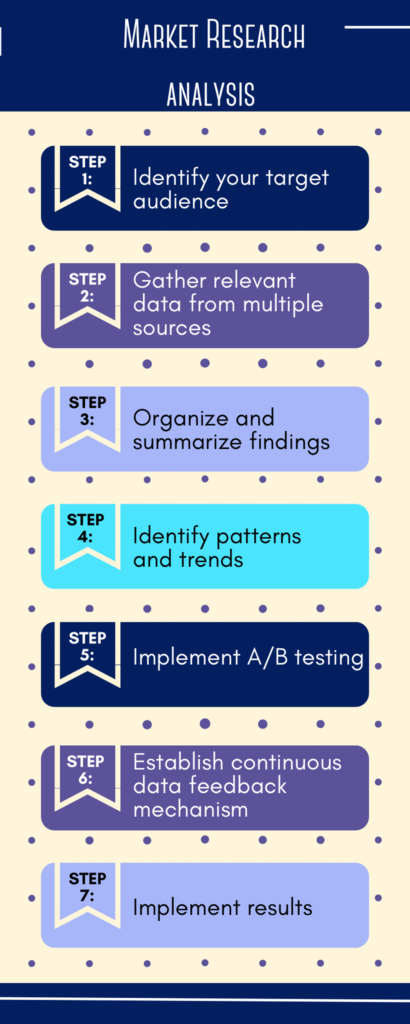Creating a memorable and unique brand identity requires a deep understanding of your market. Market research provides valuable insights into consumer preferences, industry trends, and competitor strategies, helping you make informed decisions to shape your brand.
One powerful concept that elevates your branding efforts is the Rule of 3. This principle suggests that people remember and resonate with information presented in sets of three. Whether it’s product features, brand values, or key messages. The Rule of 3 helps you distill your brand identity into a concise and memorable form.
In this guide, you learn the process of conducting market research tailored to harness the Rule of 3 in your branding strategy. We delve into the fundamentals of market research, offer practical methods for gathering insights, and provide examples and case studies to illustrate the Rule of 3 in action.
Understanding the Rule of 3
The Rule of 3 is a cognitive principle that suggests people tend to remember and engage with information more effectively when it is presented in groups of three. The origin of the Rule of 3 is traced back to ancient rhetoric and storytelling traditions.
It was commonly used in speeches and narratives to create emphasis, clarity, and memorability. The idea behind it is that three items or points are the ideal balance between simplicity and informativeness.

Some Successful Firms with Rule of 3 Branding
Benefits of Applying the Rule of 3
People remember information presented in threes. By limiting your messaging, you ensure clarity. The Rule of 3 makes your communication more impactful, as you can emphasize what truly sets your brand.
Applying the Rule of 3 ensures that your brand remains consistent across various channels. It fits the brain’s natural pattern recognition and memory capabilities. Their memorable and clear messaging helps them capture market share and customer loyalty.
Market Research Fundamentals
Before diving into market research, establish clear and specific branding goals. Determine what you aim to achieve with your brand. What do you want? An increased market share? An improved brand recognition? Or a shift in brand perception? Having well-defined goals guides your research efforts and helps you measure success effectively.
Identify Your Target Audience
Define your ideal customers by considering factors such as demographics, psychographics, behavior, and preferences. Developing detailed buyer personas helps you create a more accurate picture of who your brand needs to appeal to.
Gather Relevant Data from Multiple Sources
To conduct thorough market research, you need access to various data sources. Consider these sources:
Primary Research
Collect data directly from your target audience through surveys, interviews, focus groups, or observations. This provides first-hand insights into their preferences and opinions.
Secondary Research
Utilize existing data sources like industry reports, market studies, and competitor analyses. These sources offer valuable insights into market trends, customer behavior, and the competitive landscape.
Online Resources
Leverage online tools and platforms for data gathering. Social media analytics, web traffic data, and online forums – these sources provide real-time insights into customer sentiment and trends.
Internal Data
Examine your company’s sales records, customer feedback, and CRM data. Study your competitors’ branding strategies, customer reviews, and market positioning. Understanding what works (or doesn’t) for them informs your own branding decisions.
Analyzing Market Research Data
Here’s a breakdown of how to analyze Market Research Data. The first step is to organize and summarize findings from your data source. Recognize the patterns and trends within the industry. Solidify your market knowledge by also carrying out a thorough study of your customer feedback.

Organizing and Summarizing Findings
To organize and summarize findings, you:
- Start by cleaning and organizing your data. Remove any irrelevant or duplicate information to ensure the accuracy of your analysis.
- Group data by demographics, preferences, or behaviors. This categorization makes it easier to identify key insights.
- Create summary reports or dashboards to present the most critical findings succinctly. Visualizations like charts and graphs help convey information effectively.
Identifying Patterns and Trends
Here are the steps you need to identify patterns within your industry:
- Use statistical methods to analyze numerical data. Look for statistical significance and correlations between variables. This reveals patterns in market trends.
- Identify recurring themes, sentiments, and common phrases. Qualitative analysis provides depth and context to your findings.
- Segment your audience based on relevant criteria like age, location, or buying habits. Analyze each segment separately to uncover specific trends and preferences.
- If you have data spanning different periods, conduct a time-series analysis to track changes and identify trends over time.
Customer Feedback Analysis
In this study, you:
- Use natural language processing tools to analyze customer feedback for sentiment. Identify positive, negative, or neutral sentiments to gauge customer satisfaction.
- Look for recurring complaints or issues raised by customers. Addressing these pain points can lead to improvements in your branding strategy.
- Map out the typical customer journey based on feedback and interactions. Identify touch points where branding has the most impact.
- Prioritize customer feedback based on its potential impact on your branding goals. Some feedback requires immediate attention, while others can be addressed over time.
- Compare customer feedback and sentiments with those of your competitors. This helps you identify areas where you can differentiate your brand.
Applying the Rule of 3 to Your Branding

Here’s how to apply the Rule of 3 to your branding:
Step 1: Identify the three core values that define your brand. These values should align with your mission and resonate with your target audience.
Step 2: Choose three unique features or benefits of your product or service that set you apart from competitors.
Step 3: Craft three concise and memorable brand messages that convey your brand’s essence, benefits, or promises.
Step 4: Ensure that the three key brand elements you’ve selected align with the preferences and needs of your target audience as revealed through market research.
Step 5: Consider incorporating market trends and consumer preferences into your three key brand elements to stay relevant and appealing.
Testing and Refinement
Here’s how you approach testing and refinement in your branding strategy:
- Implement A/B tests to compare different versions of your branding elements. Test variations of your brand messaging, visuals, or website design to see which resonates better with your audience. Analyze the data to identify which version performs best.
- Establish feedback mechanisms to gather input from customers, employees, and stakeholders. Regularly review this feedback to identify areas of improvement.
- Use the insights gathered from A/B testing and feedback to make data-driven decisions. If one version of your branding elements consistently outperforms the other, consider implementing the changes based on these findings.
Conclusion
Branding is an ongoing process. Exceptional branding is the result of seamlessly weaving the Rule of 3. Rule of 3 driven by insightful market research, into the fabric of your company. This is the key to creating a brand identity that resonates deeply with your audience and distinguishes you from the competition.
To harness this power for your brand, make the most of market research and adaptability, while staying responsive to emerging technologies. For further guidance and expertise, consider visiting researchers.me – a world of top-tier market insights awaits to shape your Rule of 3 branding strategy.

